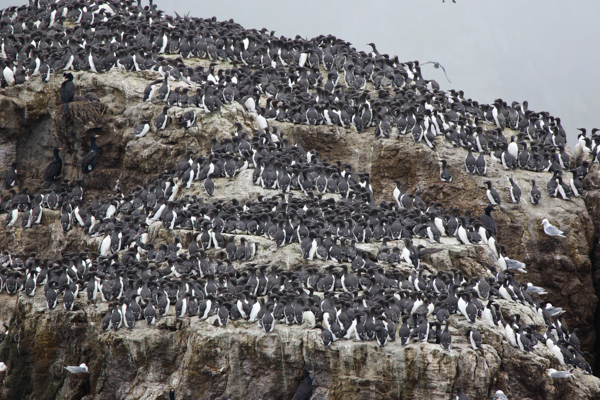In the beginning of June 2017 the Commander Islands Nature and Biosphere Reserve organized an expedition to make the first in the recent 25 years ornithological examination of Medny Island. During two and a half months Dmitry Pilipenko, our Ornithologist and Researcher, and Inspector Vitaly Ushakov stayed on the island. Dmitry Pilipenko told us about their successes and difficulties they faced.
The ornithological expedition to Medny Island had a lot of tasks and nearly all of them were fulfilled.
The main goal was to make a cadastral survey of seabirds colonies (monitoring and counts) together with comparison of their location and density today and in the 90s. It was Ornithologist Yuri Artyuhin, who collected the data in the end of the XX century. This activity took our employees a considerable part of their stay on the island. They worked from land and from boat. All the colonies they found were marked on the map and were taken a panorama photo of. “A good photographic objective with big zoom and high resolution camera gives us a possibility to count individuals and to tell apart similar looking species during PC processing of the photos. The results are more accurate, than those collected by binocular counts,” said Dmitry Pilipenko. The main inhabitants of Medny Island bird colonies are fulmars, two species of guillemots, black-legged kittiwake and others, horned puffins, auklets, glaucous-winged gull and cormorants.
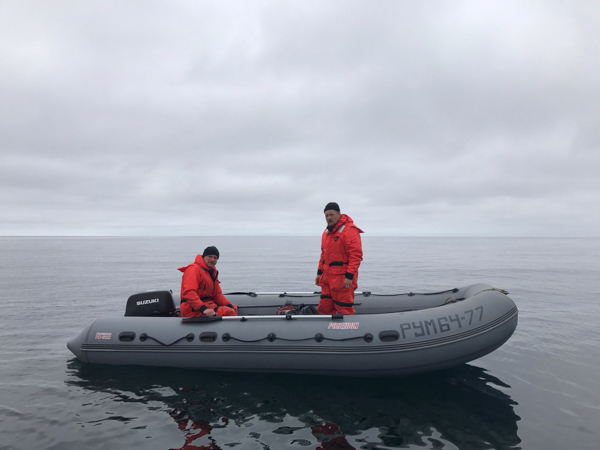
The ornithological expedition team on Medny Island. Photo by Evgeny Mamaev
Another task was to estimate the condition of peregrine falcon population – one of the rarest birds. The specialists of the reserve also visited the previously known nests, found a new one and monitored to update data on the biology of the species.
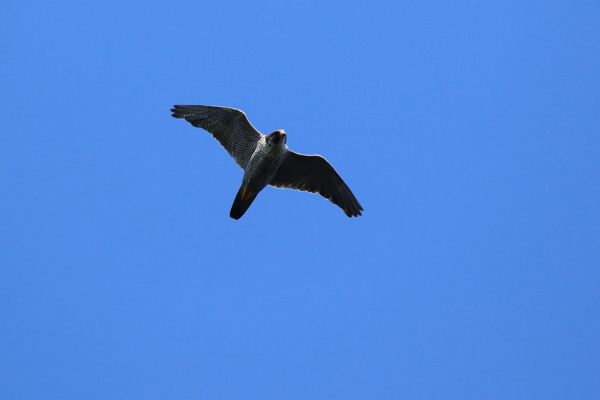
Peregrine falcon. Photo by Dmitry Pilipenko
Activities on the coastline combined with the research of the central part of the island. In tundra the specialists collected data on the nesting Passeriformes, estimated population density and distribution of rock ptarmigans and waders.
In the end of July the expedition embarked on one more important task – counts of waterfowl in the lakes and bays of the island. This period was chosen, because it is the time, when the birds choose to take their younglings down to the lakes and coasts. The highest number of waterfowl was registered on Lake Gladkovskoye and Bobroviye Kamni. The most wide-spread nesting species found during the expedition was the eider and the least wide-spread one were the wild duck and the red-breasted merganser. Also some of the transient birds were found: the pintail and the harlequin duck. We still do not know if the red-throated loon nest on the island, but these birds were spotted several times in different lakes of the island. We did not manage to find the brood.
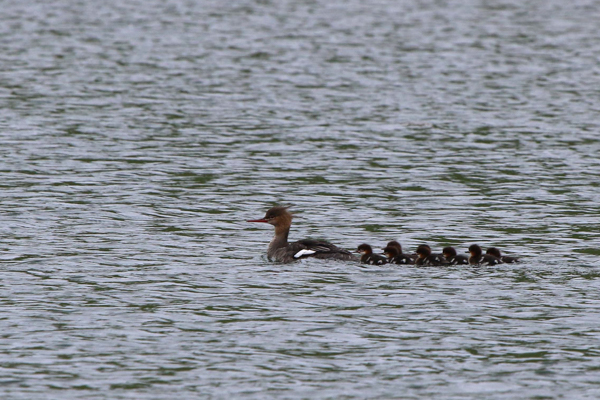
The red-breasted merganser. Photo by Dmitry Pilipenko
During their whole stay the specialists of the Commander Islands Reserve registered several transient species, including the ember goose, the bean goose and several types of ducks and waders.
Apart from bird monitoring the team also had phenological activities. They registered the hatching dates of the first and second clutch of eggs, time of leaving the nests, start of moult and other processes.
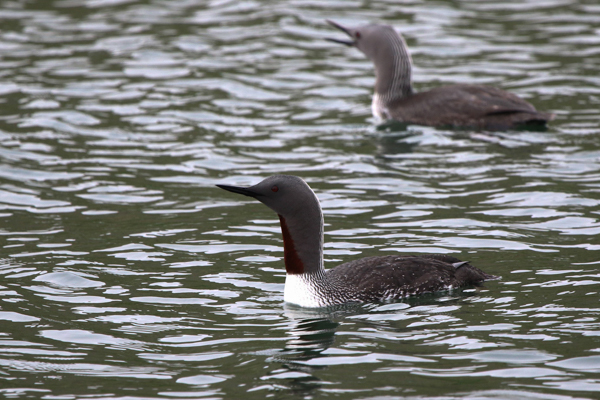
The red-throated loon. Photo by Dmitry Pilipenko
The researches, especially from boat, were highly dependent on weather conditions. The accurate weather forecast on the islands is available only for two days. The duration of long trips to the central part of the island was limited by the fact, that it is too easy to miss the day appropriate for marine monitoring. And these days were even less numerous, than we expected. “Even after leaving the coast, waves and fogs forced us to come back without any piece of data collected. The fog limited our visibility and the waves did not give the camera a chance to come to a focus. During the research of the South-West of the island – the farthest and the hardest to reach part of the island – we waited more then 2 hours for the fog to clear away to precede our work,” said Dmitry Pilipenko. He added that on Medny Island they saw only one day of the real hot and sunny summer day.
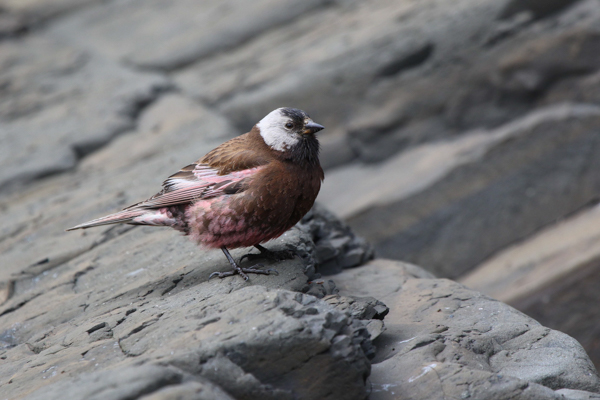
The grey-crowned rosy finch appeared to be rather common on Medny Island with its population comparable to one of the snow bunting and the wren. Photo by Dmitry Pilipenko
Regardless of the difficulties, the majority of the expedition tasks were fulfilled, as we already said. The total number of birds on Medny Island is estimated in tens of thousands. We look forward for several months of work to process all the precious materials and data collected during the expedition.
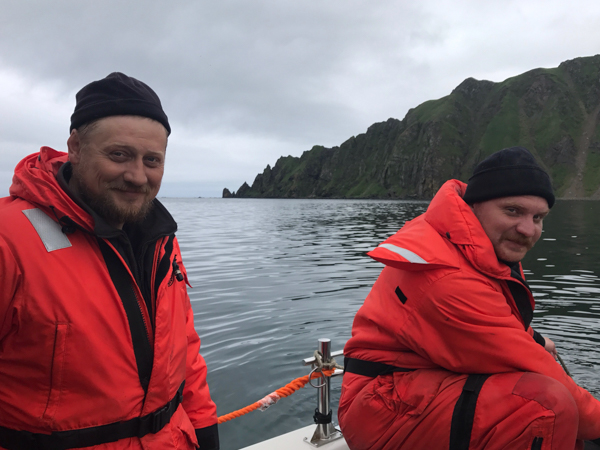
The expedition team. Photo by Evgeny Mamaev
Head photo made by Evgeny Mamaev









